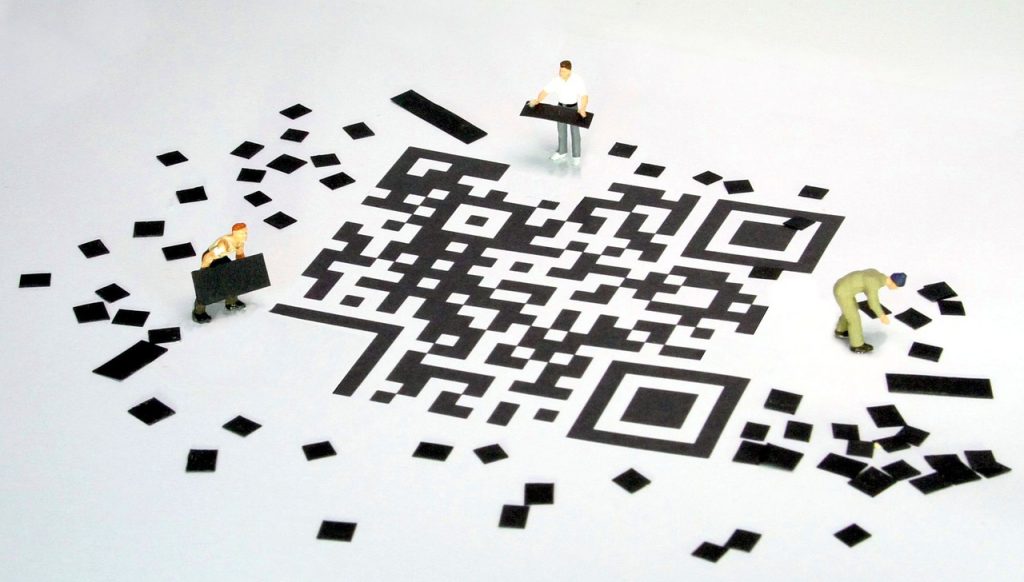QR codes, or Quick Response codes, have come a long way since their inception in the mid-1990s. Developed by Denso Wave, a subsidiary of Toyota, these square patterns of black and white modules were originally designed for efficient inventory management in the automotive industry. However, their potential quickly extended beyond their initial purpose, leading to their widespread adoption and transformative impact on digital interactions.
The Birth of QR Codes
In 1994, Denso Wave engineer Masahiro Hara was tasked with creating a code that could store more information than traditional barcodes. He sought to develop a code that was capable of high-speed scanning and could hold various types of data, including alphanumeric characters, symbols, and binary data.
The result was the QR code, a two-dimensional matrix barcode that could store significantly more information than its one-dimensional counterparts. The distinctive square shape and pattern of black and white modules set QR codes apart and allowed for increased data storage capacity.
Early Adoption and Growth
After their invention, QR codes quickly gained recognition for their potential in streamlining processes and enhancing user experiences. They were initially embraced in the automotive industry, where they revolutionized inventory management and logistics. QR codes made it possible to track and manage parts and components efficiently, improving overall productivity and reducing errors.
As QR codes demonstrated their effectiveness, their application expanded into other sectors. From manufacturing and supply chain management to advertising and marketing, QR codes began transforming the way businesses operated and interacted with customers.
The Role of Mobile Technology
The proliferation of smartphones equipped with high-resolution cameras and QR code scanning capabilities played a significant role in the widespread adoption of QR codes. As mobile technology advanced, scanning QR codes became effortless for users, eliminating the need for specialized scanning devices or hardware.
Mobile apps dedicated to QR code scanning emerged, making it even more convenient for individuals to access information or engage with businesses using QR codes. The combination of mobile technology and QR codes created a seamless and user-friendly experience, paving the way for their integration into various aspects of daily life.
Expanding Applications
With the increasing popularity of QR codes, businesses and marketers recognized their potential as a powerful tool for bridging the gap between physical and digital realms. QR codes started appearing on product packaging, advertisements, posters, and even business cards.
Companies leveraged QR codes to provide customers with additional product information, exclusive discounts, or links to online content. This integration of QR codes into marketing strategies allowed for personalized and interactive experiences, creating deeper engagement and driving conversions.
The widespread adoption of QR codes also led to their integration into ticketing systems, loyalty programs, and payment platforms. Events and transportation services embraced QR codes for streamlined check-ins, while retailers used them to enable contactless payments and reward customers with loyalty points.
From Niche to Mainstream
Today, QR codes have become a ubiquitous part of our digital landscape. Their versatility, ease of use, and ability to store various types of data have positioned them as a preferred choice for businesses and consumers alike. Whether it’s scanning a QR code to access exclusive content, make a purchase, or retrieve information, these codes have transformed digital interactions and revolutionized the way we engage with the world around us.
As QR codes continue to evolve, their potential for enhancing user experiences, bridging offline and online interactions, and simplifying information access is only expected to grow. From their humble beginnings as a solution for inventory management, QR codes have risen to prominence, reshaping the way we interact with information and revolutionizing digital interactions across industries.
So that’s why OpenQr.io offering a comprehensive suite of QR codes types to meet the diverse needs of users across various industries. With OpenQr.io, users can easily create custom QR codes tailored to their specific requirements. Whether it’s for business purposes, personal use, or marketing campaigns, the platform provides a user-friendly interface that enables seamless QR code generation. Users have the flexibility to customize the design, choose from various QR code types, and incorporate branding elements to align with their unique style and objectives.
